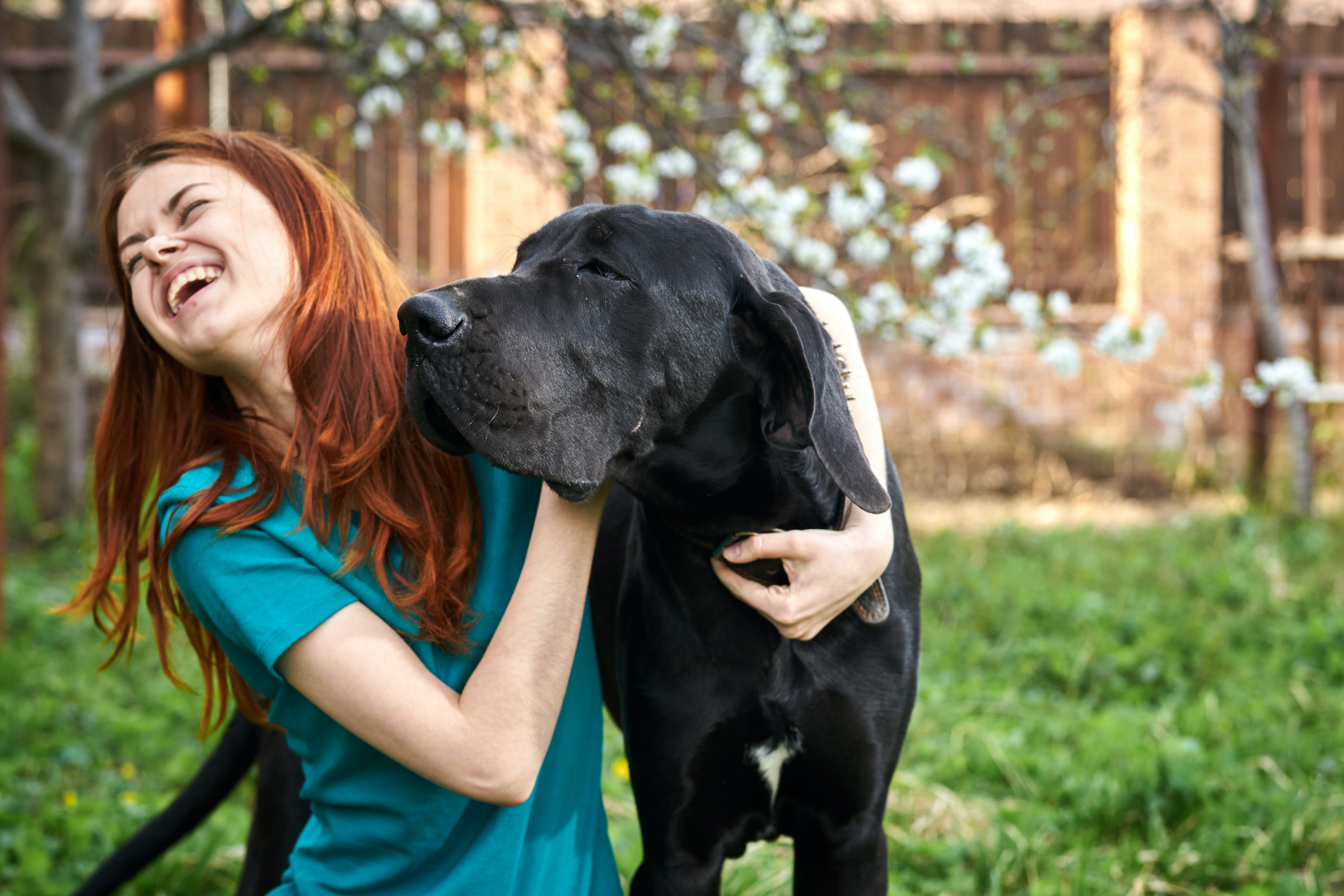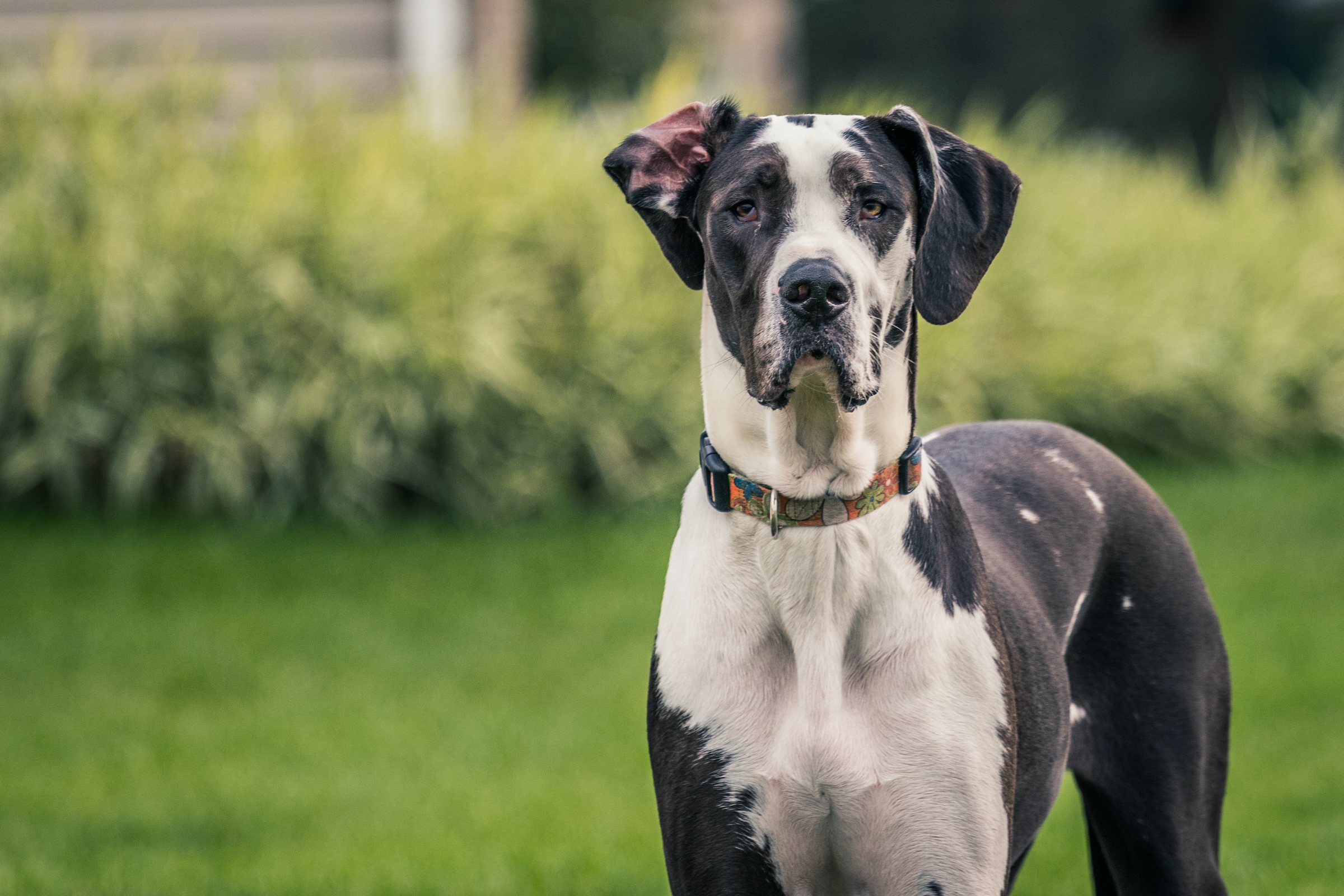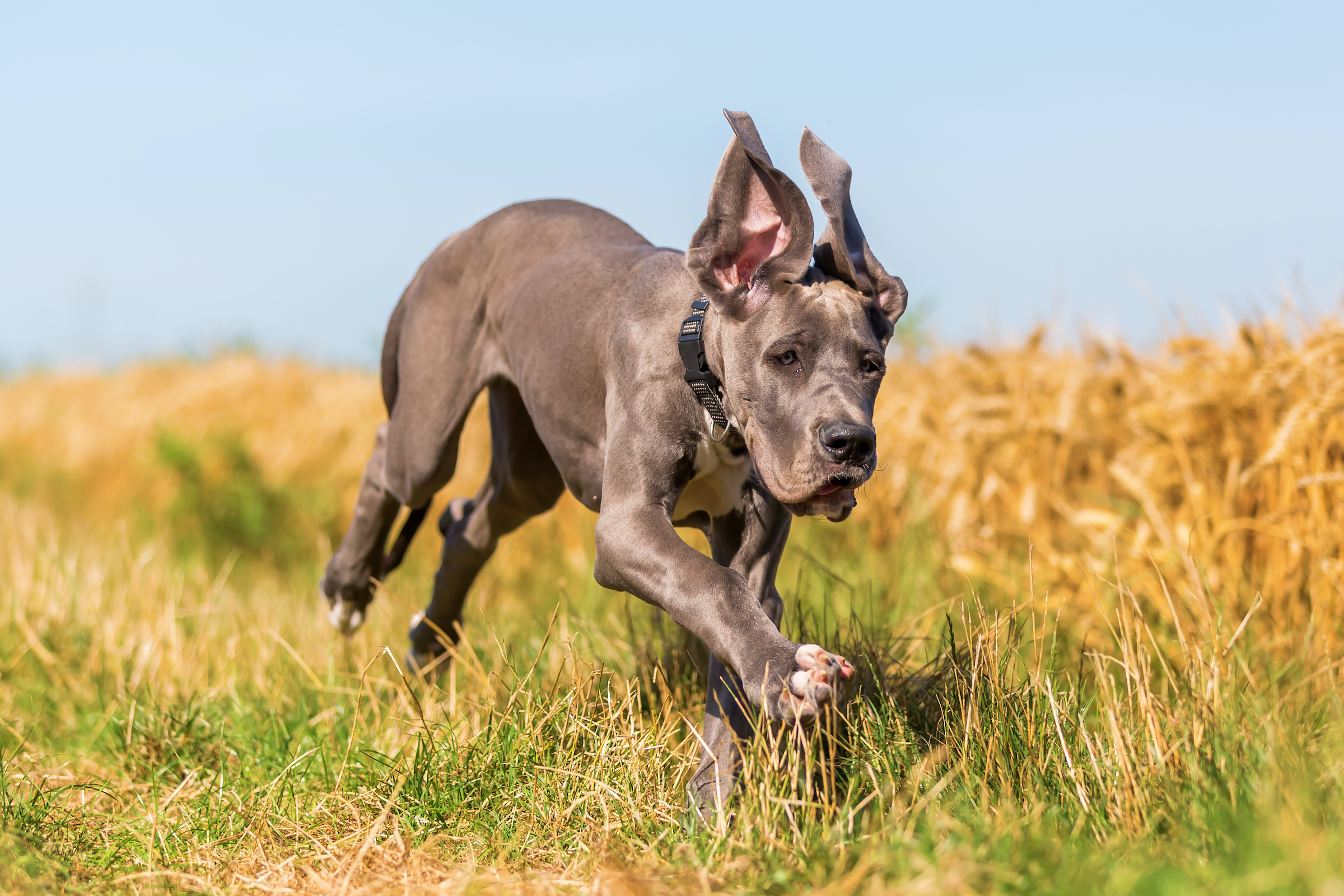Giant dog breeds — which are those that weigh 100 pounds or more when fully grown — are some of the tallest and most loving dogs. The term “gentle giant” is a true sentiment indeed. These pups’ weight can exceed over 200 pounds in some cases, but in others, it’s their height that’s truly shocking. Most folks tend to think of the Great Dane as the tallest breed you can find — but are they right? Just how tall is a Great Dane?
Read on to learn the basics and fun facts about this gigantic breed’s height, including some of the extra-large dog beds, clothes, and other pet gear you’ll need to keep them as comfy as can be. Having a large dog can be tons of fun, but it doesn’t have to be a ton of trouble, too.

How tall is a Great Dane from head to feet?
When measuring a dog, it’s proper practice to measure from the tops of their shoulders (called the withers) to where their paws touch the ground. So when you see a breed’s height listed anywhere, it doesn’t include their head!
For female Great Danes, you can expect a fully grown dog to be about 28 to 30 inches tall from withers to paws. These ladies will weigh about 110 to 140 pounds on average, but their male counterparts can grow even bigger: 140 to 175 pounds. The average height of a male Great Dane is 30 to 32 inches at the shoulder, though even taller dogs are not uncommon (via American Kennel Club).
What is the tallest dog breed?
If you’re convinced that the Great Dane is the tallest dog breed, you’re absolutely right. While a few other breeds can give this one a run for their money, most dogs to have held the record for the world’s tallest dog have been Great Danes. The world record holder for the tallest dog ever measured is a Great Dane named Zeus who lived in Michigan with his family. He measured 44 inches tall from withers to paw pads when he met the officials from Guinness World Records in 2011.
Freddy, another Great Dane who held the title of the tallest living dog, passed away in 2021. He did not break Zeus’s height record, but he was certainly close: measuring 40 inches from withers to the floor.

Why the right dog bed is so important
With great height comes great responsibility, especially when it comes to keeping your fur baby comfortable. Even as young pups, many giant dogs suffer from symptoms of early aging and joint discomfort. Because of this, little things like an appropriate bed can make a big difference in a Great Dane’s quality of life.
All-day comfort starts with deep, restful sleep, so your dog’s bed is of utmost importance. Luckily, there are many beds that come in the perfect size for your larger-than-life pup, and they provide the same orthopedic benefits as their smaller versions.
With over 2,000 positive reviews and six attractive colors to choose from, FurHaven’s Quilted Orthopedic Sofa Bed is a pet parent-favorite on Chewy. Owners love the easily removable cover and lightweight feel of the bed, while dogs love the luxurious egg-crate foam that supports achy and arthritic joints.
Of course, there are many top-quality dog beds that your Great Dane could love, but a little research goes a long way in finding a bed that lasts a long time and keeps your buddy truly comfy.
Coats for Great Danes to stay warm
Despite being so large, this lean breed is surprisingly sensitive to colder temperatures. A lightweight jacket can be just the thing to keep your best buddy comfortable when the colder months roll around, but it can be tricky to find one to fit your massive dog.
Carhartt’s XL Black Chore Coat for Dogs is a popular choice for pet parents of giant breeds, though you never know what else you might find with a quick trip to the pet store. A coat like this is wonderful because it allows your dog freedom of movement without compromising any warmth. High-quality fabric and adjustable straps are a must-have — and this coat checks all the boxes!

Joint supplements can help Great Danes stay healthy and happy
For Great Danes struggling with joint health, a scientifically formulated dietary supplement may help ease some of the symptoms. They may also help keep future joint issues at bay for a while, though a visit to the veterinarian will give you the best plan of action to keep your furry friend mobile and comfortable.
Glyde Mobility Chews are a popular supplement among Great Dane owners, particularly because of their high-quality, anti-inflammatory ingredients. Chondroitin, glucosamine, and green-lipped mussel powder are helpful in fighting against osteoarthritis, swelling, and stiffness. With easily breakable, heart-shaped pieces, feeding this supplement will be a piece of cake for both you and your dog.
Now that you know about the benefits and drawbacks of the Great Dane’s height, you can make the most informed decisions for your new best friend. It’s especially helpful to keep an eye on their health and comfort from the moment you bring them home, even as a puppy, so you know you’re giving them the very best.
Editors' Recommendations
- 5 surefire ways to keep your dog off your bed and get a good night’s sleep
- This is the ultimate week-by-week puppy training schedule every new pet parent needs
- What you need to know about dogs with blue eyes
- Why do dogs lick their lips? This is when you should be worried
- Why is my dog whining? 6 common reasons and what you can do to stop it




